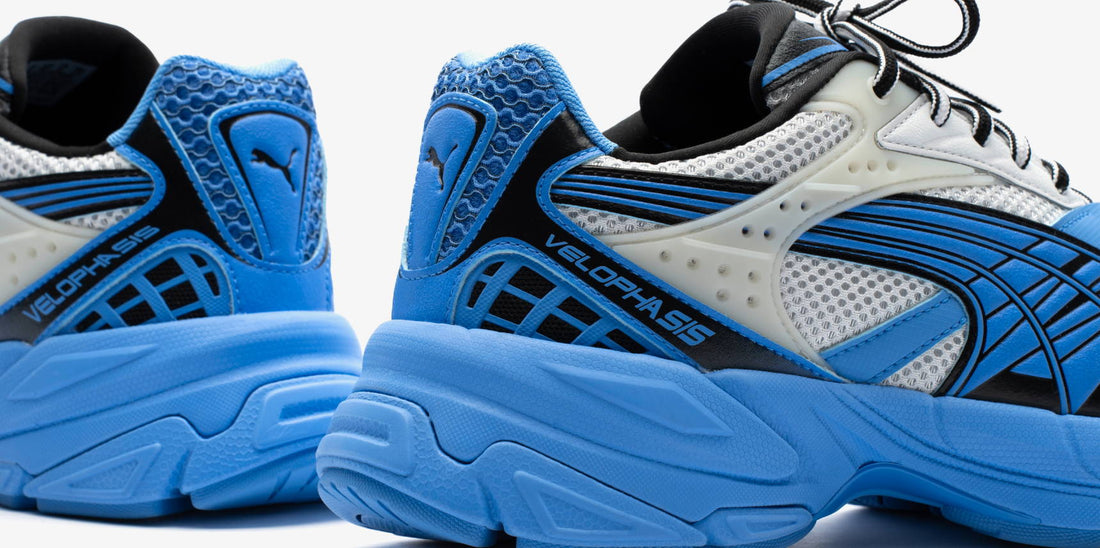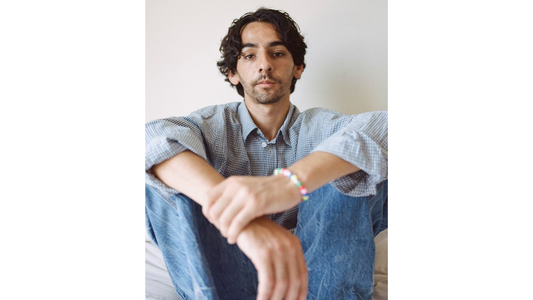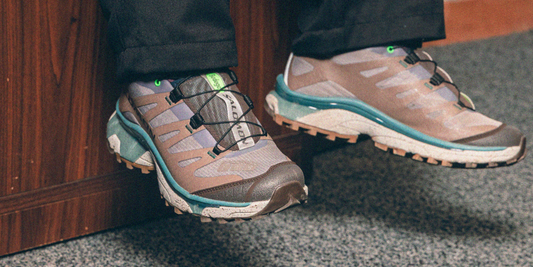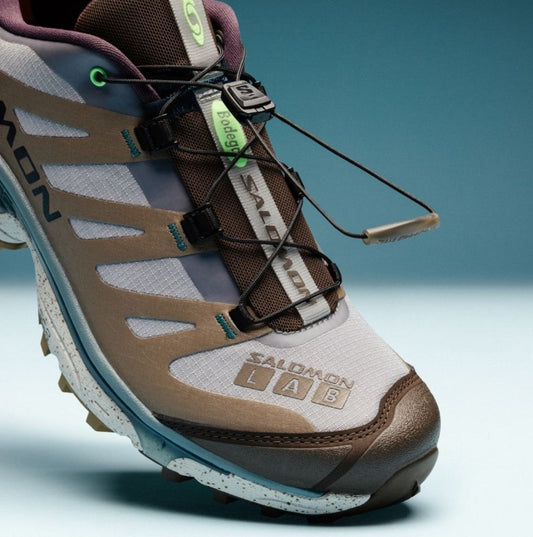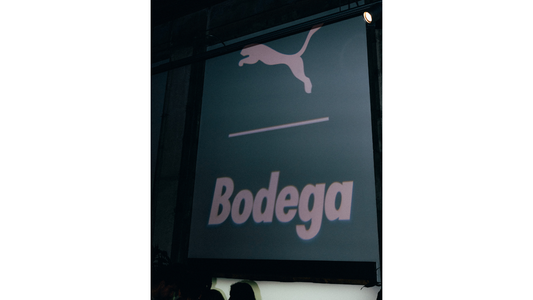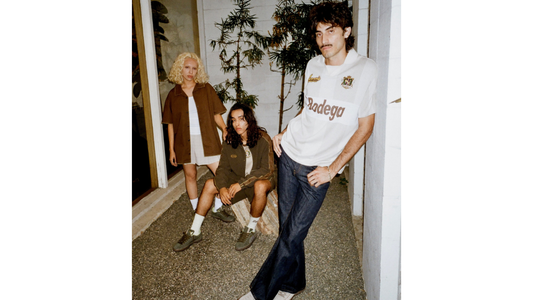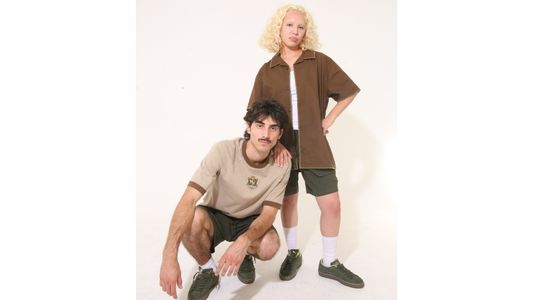In our latest In Conversation With, we are excited to sit down with Daniel Taylor, Head of Design at PUMA Sportstyle, and the mind behind PUMA’s latest archive-inspired runner, the Velophasis.
Starting at the brand in 2008, Daniel has worked across various categories and roles, allowing him to see and be a part of the growth that PUMA has achieved through a renewed focus on brand legacy and heritage.
Based in Tokyo since 2019, with a hybrid day-to-day routine hopping from hands-on design and project management to supporting creative direction and collaborations, it immediately became clear that Daniel’s ability to combine his well-rounded background at PUMA with an uninhibited pool of inspirations has made the Velophasis a perfect match between concept and execution.
Read on to learn about Daniel's influences in the development of the Velophasis, why nostalgia is such an foundational inspiration, what it was like working with Skepta on the rollout, and much more.
Q: Where does the name Velophasis come from?
A: I took so many cues from our 2000s running archive, a lot of the language originates from both the ‘Velosis’ and the ‘Phasis’ so I spliced them together. I realized also that it's pretty useful to just invent new words when naming a shoe, that way if people Google it or hashtag it on Instagram or TikTok, it's unique and easy to find content.
Q: Can you talk about what influences inside and outside the sneaker industry inspired the model? For instance, 2000s runner reference.
A: I often create based on emotion, not in a sense that I am driven by a ‘designer ego’ but I like to build either visually with research or in my head a kind of aesthetic ‘narrative’ or universe. So when it comes to thinking of a specific era like the 2000s I am not just googling ‘Y2K aesthetic’ but I am looking at more obscure references or even culture and music from that era. Also looking into how modern artists would reimagine the 2000s, movements like Vaporwave, or the impact of Web 2.0 nostalgia on graphic design.
Q: What is it about nostalgia that makes such a compelling jumping-off point for a design?
A: I think about this a lot, culture, visual arts, and music are symbiotic. So here’s an example: Do you remember how 80s references became huge? All the way back from when Daft Punk made ‘Discovery’, it impacted sneakers, fashion, and came to an apex with shows like Stranger Things and artists like The Weeknd playing with 80s nostalgia. This only happened because the kids of the 80s were now adults and felt a nostalgia to relive their hazy memories of a ‘better time’. It’s the same now with the late 90s ‘Y2K’ aesthetic or even post-2000s. The youth are looking back at a forgotten time and recontextualizing it through fashion, art, and music. What’s interesting is just how fast the trends are accelerating because of Instagram and TikTok ‘aesthetics’. Culture is moving faster and it feels like when it comes to nostalgia everything 80s/90s/2000s is blurring together. It’s kind of a beautiful mess and an exciting time to create.
Q: When looking at the lineup of PUMA’s most iconic designs, where does the Velophasis fit in?
A: It’s about paying homage to our history in Performance running. PUMA has a huge archive of post-2000s running styles that were under a category called ‘Complete’. Essentially shoes that would cater to specific needs of runners and were innovative at the time with technologies like DuoCell and idCell cushioning systems.
Q: Are there any specific innovations or stylistic cues you were able to fold into this design that you wanted to go over?
A: Within the PUMA Sportstyle team, comfort has been a huge drive for us in the last few years. I did a shoe called the RS-X and that was the first time I went the extra mile and really thought about comfort inside and out, and the feedback was amazing. With the Velophasis and any design since, it's literally our Number 1 priority. So for this shoe, we used two compounds of EVA foam, one squishy layer for comfort and another to enhance stability. Modern consumers do not play around when it comes to comfort, it can make or break a new sneaker.
Q: There are different iterations of the sneaker such as Bionic, Phased, and Technisch? What is the thought process behind each one?
A: We work with our product managers closely as a team to help build a new collection and product rollout. Everything is built around seasonality and consideration for consumer and regional needs. With these drops, it’s about bringing something for everyone whilst trying to establish an aesthetic or product identity through color and material stories.
Q: How did you decide on material and color blocking for each version?
A: I like to experiment with new techniques to come up with colorways. So for example when I was designing the shoe there was a lot of Photoshop involved, splicing and warping things together. For the Phased Pack I took one of these Photoshop ideas and realized I could pretty much create all 3 colors by playing with the Hue and Saturation Sliders, then I could take these ideas as inspiration for the final colors. Design is a constant learning process, new methods can sometimes bring unique results.
Q: While in the development phase, how did you envision this sneaker being styled/worn?
A: I am really happy you asked this question. Our design team is hyper-aware of how people dress or style products and that a shoe is not an object, but a part of a person’s identity. We always envisioned the Velophasis being worn with oversized denim/trousers or parachute pants, this is why when looking down on the shoe, the front 3rd has a lot of unique details happening, knowing that the rest of the shoe could potentially be covered by the pants.
Q: Fans might have first caught wind of the Velophasis at Paris Fashion Week earlier this year when Skepta rocked them. What was it like working with him on this release and seeing him in the sneaker?
A: I am extremely humbled to have the opportunity to not only meet but work with people who drive and create culture. I come from the UK, so for me, he is embedded in our music culture and is a modern British-style icon. Now I live in Tokyo, I joined Skepta on an 'inspiration tour' of the city and these experiences are so valuable when working with an artist, to talk directly and get a feel for what inspires and drives them creatively.

